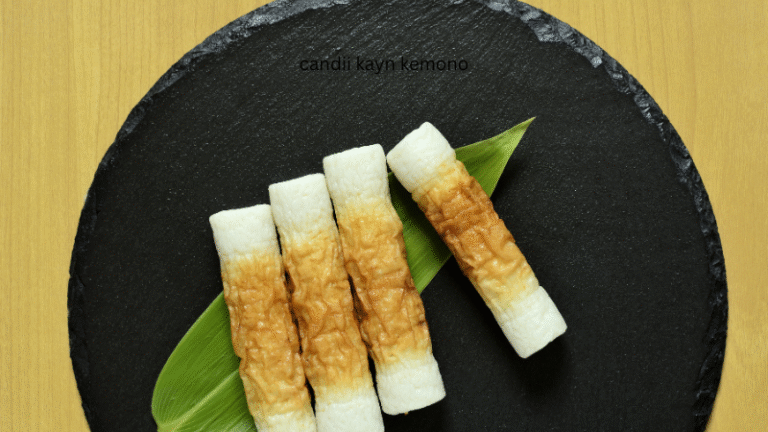Candii Kayn Kemono is one of those. It lingers in the imagination, a strange blend of sweetness and untamed spirit, like sugar melting into shadow, like a song that is both lullaby and storm.
The words seem simple, yet together they form a riddle. Candii Kayn suggests sweetness, innocence, and play, while Kemono carries the essence of wildness, of animalistic transformation rooted in Japanese folklore. Together, they create a duality that is irresistibly poetic: the wild draped in sugar, the sweet wrapped in fur and mystery.
To explore Candii Kayn Kemono is to explore identity itself—the balance between what is soft and what is fierce, between the masks we wear and the truths they reveal.
What Does Candii Kayn Kemono Mean?
Breaking Down the Phrase
“Candii Kayn” echoes candy cane, a symbol of sweetness, childhood delight, and colorful play. It is a name drenched in sugar and light, whimsical yet powerful in its ability to stir nostalgia.
“Kemono,” on the other hand, is a Japanese word meaning beast or animal. In the world of art and culture, it refers to anthropomorphic characters—creatures that are both human and animal, carrying traits that blur the boundaries of form and identity.
Symbolism in Each Word
The fusion of these two words is more than coincidence. “Candii Kayn” is the surface, the sugar-coated mask of delight. “Kemono” is the depth, the primal truth, the wilderness inside us all. Together, they become a metaphor for the human condition—playful yet untamed, gentle yet fierce.
The Origins of Kemono in Japanese Culture
Historical Roots
In Japan, kemono originates from ancient tales where humans and animals intertwined. Fox spirits (kitsune), shapeshifting raccoon dogs (tanuki), and dragon-beasts roamed stories, teaching lessons of trickery, love, and transformation. These myths painted animals as more than creatures—they were reflections of our hidden selves.
From Folklore to Modern Fantasy
Over centuries, kemono evolved into an artistic genre distinct from anime. It emphasizes rich textures, animal features, and emotional depth. In kemono, a pair of ears or a tail is not decoration but a bridge—connecting humanity with nature’s untamed beauty.
This tradition of transformation is the soil in which Candii Kayn Kemono takes root.
Candii Kayn – The Sweetness of a Name
The Playful Connotations of “Candii”
The deliberate spelling—Candii with two “i’s”—feels whimsical, playful, and childlike. It calls to mind candy canes of winter, sweets that melt on the tongue, ribbons and colors bright enough to stain memory.
A Metaphor for Identity and Color
But beneath the sugar is symbolism. Candy is a mask of joy, but too much sweetness can be overwhelming. The name Candii Kayn hints at the complexity of identity—how what appears delightful on the outside may conceal shadows within. Like frosting on a cake hiding layers of bitterness and spice, names often hold duality.
Kemono as an Artistic Style
Distinction from Anime
Unlike traditional anime, kemono art emphasizes more animalistic traits, heavier expressions, and dreamlike surrealism. It is less about polished perfection and more about the raw, instinctual, and emotional.
Its Emotional and Visual Essence
Kemono characters are often melancholic, mysterious, or deeply expressive. They are not simply cartoons but embodiments of feeling—pain, longing, joy, or transformation. To wear the mantle of kemono is to wear the truth of both beast and human.
The Fusion of Candii Kayn and Kemono
A Meeting of Cultures and Aesthetics
When sweetness (Candii Kayn) meets wilderness (Kemono), the result is more than just visual—it is symbolic. It represents the blending of cultures, of East and West, of innocence and rawness.
How Sweetness Blends with Animalistic Grace
Imagine a creature clothed in pastel ribbons yet carrying the eyes of a wolf. Imagine softness edged with claws. That is Candii Kayn Kemono—a paradox made flesh, an aesthetic that refuses to choose between gentle and fierce.
The Emotional Language of Kemono Art
Softness, Mystery, and Expression
Kemono art often carries a dreamlike quality. The characters are not always smiling—they are often caught in moments of deep reflection. This emotional honesty resonates with those who see themselves in the in-between: not wholly human, not wholly other.
Why It Resonates with Human Longing
Humans long to escape into identities that free them. Kemono allows the expression of emotions we hide in everyday life—rage, melancholy, wild joy. In the world of Candii Kayn Kemono, sweetness becomes the gateway to hidden truth.
